There is little doubt left that climate change is real, and climate change effects
taking place around the planet are becoming all too obvious.
Anthropogenic warming could lead to some impacts that are abrupt and irreversible, depending upon the rate and magnitude of the climate change. IPCC Report (Ref. 1)
Global warming effects are leaving their mark on the planet as a whole, as well as on every plant, animal and ecosystem, in some way or another.
In this article, we discuss the most obvious effects of global warming on our environment.
Climate Change Effects on Climate and Global Sea Level
Table of Contents
According to IPCC’s 2007 predictions, the global climate and sea level are likely to undergo the following changes:
Changes to Climate Patterns
- The greatest increase in the temperature is projected to occur over the polar region of Northern Hemisphere due to:
- melting of sea ice, and
- the associated reduction in surface albedo
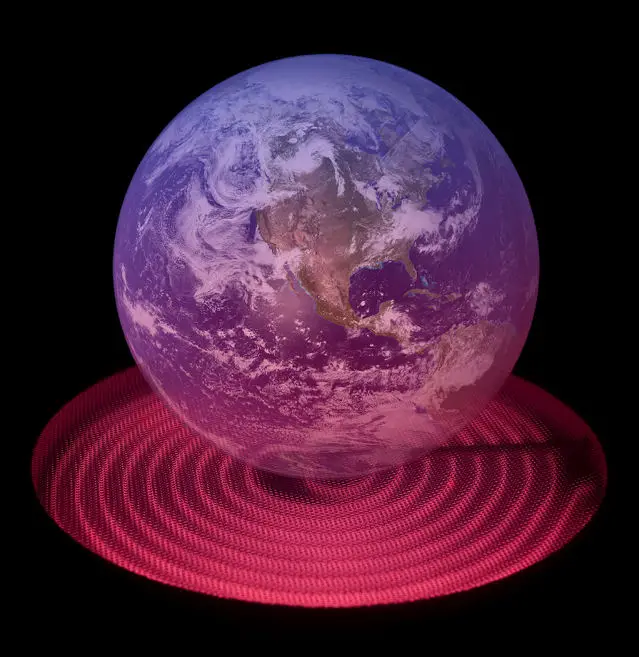
Climate Change Effects Global warming will bring significant changes to the Earth’s climate
- Northern Hemisphere will warm faster than Southern Hemisphere
- Greater warming over lands than over the oceans
- Changes in global precipitation patterns:
- Increased precipitation in polar and subpolar regions
- Decreased precipitation in middle latitudes
- While precipitation near the Equator is projected to increase, the rainfall in subtropics is projected to decrease
- Droughts and floods in many areas
- Decreased summer precipitation and greater rates of evaporation in North America, Europe, and Africa will be a cause of decreased soil moisture and droughts in many regions
- Changes in the hydrological cycle (greater rates of evaporation and precipitation) may lead to intense precipitation and flooding in many regions
- Oceans are likely to continue to warm for several centuries (!) due to greenhouse concentrations which have already taken place
- Decrease in the global circulation of the oceans that helps carry warm water from the subtropics towards the coastal regions of Europe, and thus helps moderate the climate of this continent; such a disturbance could cause “dampening of surface warming”, rather than actual cooling, in the north of the Atlantic Ocean
Extreme Weather Events
There is a certain level of agreement in the scientific community that many extreme weather events that we are now witnessing on a more regular basis are consequences of increasing global temperatures. (Ref. 3)
There are many extreme weather events that may be attributed to global warming:
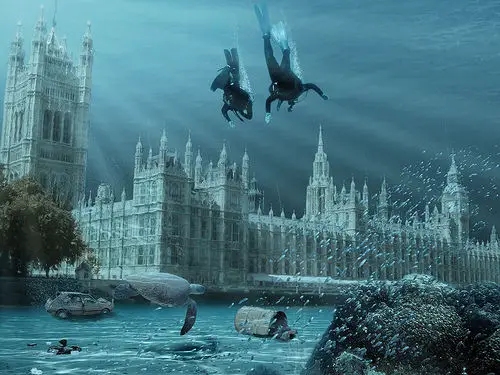
- Floods
- Droughts
- Heat waves
- Extreme winter cold and snowfall
- Tornadoes
- Extreme Storms
- Tropical cyclones / hurricanes / typhoons
Currently, scientists are still debating whether an increase in the intensity of tropical cyclones, which have enormous destructive potential, is a result of rising ocean temperatures.
There seems to be a lot of evidence to support the statement that global warming is a major cause at work here. (Ref. 4)
Extreme weather events, in general, are projected to increase as a result of global warming.
Changes to Global Sea Level
Further increase in global sea level is expected due to the melting of ice cover including Greenland and Antarctica:
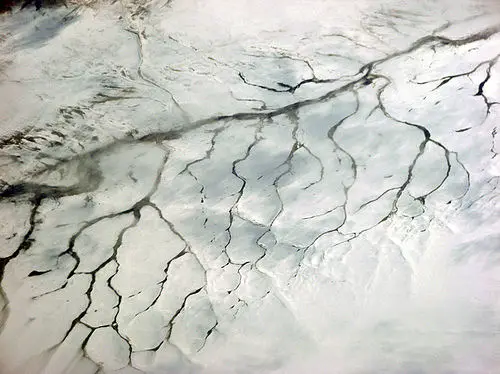
Complete melting of Greenland ice sheet would be caused by only an additional 2 ° C and would cause global sea level to rise by 5 – 6 meters.
This event would submerge a substantial number of islands and lowland regions. Among other regions, these would include:
- US Gulf Coast and Eastern Seaboard (including the lower third of Florida)
- Much of the Netherlands and Belgium
- Heavily populated tropical areas like Bangladesh
- World’s major cities – Tokyo, New York, Mumbai, Shanghai, Dhaka
- If the complete loss of the West Antarctic ice sheet were to occur, this would lead to a 10.5 m rise in the global sea level.
This event might take several centuries to occur but it is possible that the rate of loss might be a lot faster.
Climate Change Effects on Physical Environment
The global warming effects have a potential to be so disastrous that many terrestrial and marine ecosystems and habitats around the planet may, at best, be severely damaged, and at worst, disappear altogether.
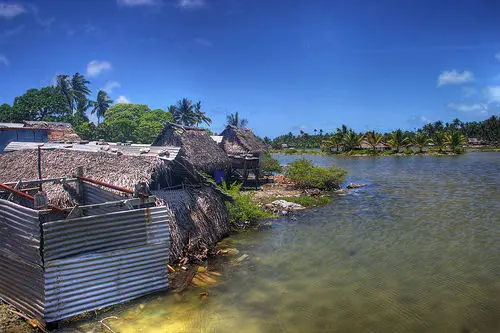
Coastal ecosystems such as wetlands, salt marshes, and mangrove swamps, are the most vulnerable ones. Rising sea levels, as well as warming-induced catastrophes which may strike coastal areas, will naturally affect millions of human settlements inhabiting them as well.
UN Environmental Programme (UNEP) 2002 report suggests that 40% of the world’s total population live in coastal areas less than 60 km from the shore. (Ref. 5a)
These populations and their environmental support systems are without a doubt the most vulnerable groups at risk of climate change consequences.
There is a real fear among some small island inhabitants that their lands may totally disappear under water because of rising sea levels caused by global warming.
As an example, the government of the Maldives – an archipelago of almost 1,200 coral islands located in the Indian Ocean with most islands lying just 1.5 meters above the sea level – is considering a purchase of land elsewhere in the world for a complete relocation of this nation, because of the fear that these islands will be totally flooded by rising sea levels. (Ref. 5b)
Apart from coastal areas, virtually every type of other ecosystems will be affected in some way or another.
Climate Change Effects on Terrestrial Ecosystems & Habitats
Climate Change Effects on Forests
Forests are sensitive ecosystems which are seriously affected by global warming.
Warmer climate encourages the growth of pests which destroy forests in unprecedented numbers.
A good example of that is a pine beetle infestation of forests in British Columbia, Canada, which would have killed 50% of the pines by 2008.
(Ref. 6)
Forest ecosystems also face the risk of wildfires due to the warmer climate.
There is a double relationship between global warming and forest wildfires.
Originally, wildfires may be caused by global warming. But since forests are huge carbon storages, wildfires become an actual cause of global warming in their own turn, because carbon dioxide which is released during the fires contributes to the greenhouse effect.
Tropical rainforests are also part of a so-called carbon cycle positive feedback.
Global warming certainly puts forests in an unenviable position.
For example, Amazon is the biggest remaining tropical rainforest on the planet. The IPCC projects that: (Ref. 7)
By mid-century, increases in temperature and associated decreases in soil water are projected to lead to the gradual replacement of tropical forest by savanna in eastern Amazonia.
Climate Change Effects on Mountains (8)
Mountains cover roughly 25% of the Earth’s surface and provide habitat for plants, animals, and people inhabiting these areas.
Apart from an increased number and intensity of forest fires and reduced diversity of wildlife, another significant effect that climate change will force upon the mountainous ecosystems is the melting of their snow cover and retreat and disappearance of glaciers.
Climate Change Effects on Marine Ecosystems & Habitats
Ocean Acidification (Ref. 9)
Oceans are the world’s biggest carbon sinks and have absorbed about half of all anthropogenic carbon dioxide since around 1800.
But this important environmental service comes at a big price: the oceans have become significantly more acidic as a result of this process.
Ocean acidification has been implicated for damaging some of the most beautiful creatures on the planet – coral reefs, as well as other shell-forming organisms.
Climate Change Effects on Biodiversity & Animals
Indeed, rising global temperatures put famously rich biodiversity of tropical rainforests and other ecosystems at an extremely high risk of disappearance.
In its most recent assessment, the IPCC re-iterates that:
20-30% of species assessed so far are likely to be at increased risk of extinction if increases in global average warming exceed 1.5-2.5°C (relative to 1980-1999) (Ref. 10), and
As global average temperature increase exceeds about 3.5°C, model projections suggest significant extinctions (40-70% of species assessed) around the globe.
(Ref. 11)
We discuss animal extinction in more detail here.
Global warming does not only make vegetation “gasp for air” but also leads to animal habitat loss.
This is an especially big problem for sensitive species such as tropical frogs.
For example, cloud forests [e.g., in Central America] which are vital habitats to certain amphibian species are disappearing fast as a result of the warming temperatures.
The loss of these habitats leads to the extinction of the amphibians dependent on these forests for their survival. (Ref. 12)
Polar bears have become “poster children” for the melting of Arctic ice due to climate change.
Melting ice reduces the ability of polar bears to find enough food as they prefer to use ice as a platform to hunt for prey.
Another example of how damaging global warming effects can be is that of the orangutan.
Orangutans may be seriously affected by the spread of viruses and bacteria which normally thrive in warmer conditions. This, among many other things, may push these animals even closer to the brink of extinction.
It is not only the habitat loss and spread of diseases that may cause animal extinction. It is also the availability of food and water for animals that will likely be made more scarce as a result of global warming.
Above are just three examples of animals affected.
The list of animals at risk of climate change will, of course, be longer and longer as the planet gets hotter and hotter.
Climate Change Effects on Various Seasonal Processes of Plants & Animals (13)
Many seasonal processes are also affected by global warming.
We are starting to witness:
- Earlier leaf production by trees
- Earlier greening of vegetation
- Changed timing of egg-laying and hatching
- Changes in migration patterns of birds, fish, and other animals
- Reductions and re-distributions in populations of algae and plankton; this threatens the existence of fish and other animals that rely on algae and plankton for food
Climate Change Effects on Humans
Like virtually all types of plants, animals and environmental ecosystems will be affected by warmer climate in some way or another, so will the human society in all its complexity be affected by often unpredictable, wide-ranging and far-reaching global warming consequences.
By far the most important areas from the point of view of human well-being affected will be:
- Water supplies
- Food supplies, and
- Human health
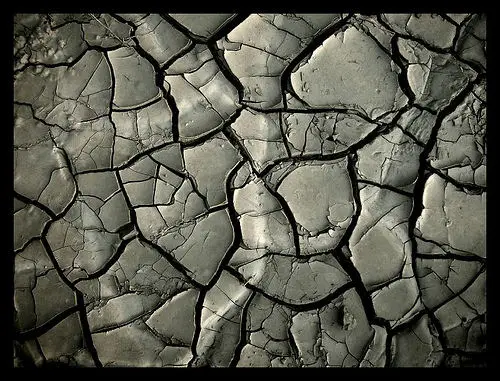
Water makes up 70% of the human body’s chemical composition. It is, therefore, a resource without which we cannot exist.
This precious resource is now under serious threat from global warming.
By the middle of the 21st century, water availability is projected to [temporarily] increase in higher latitudes and in certain wet tropical regions [due to melting of mountain glaciers], and decrease in drier parts of the tropics and subtropics, especially during the summer period. (Ref. 14)
Ironically, the dry regions of the world will get even drier and will suffer severe droughts, especially southern Africa, the Middle East, western North America, and Western Australia. (Ref. 15)
The water quality will also be negatively affected by heavy precipitation events which may contaminate drinking water supplies.
Energy generation will also be affected by water scarcity. Reduced water supplies will have a negative impact on the power plants depending on water for their functioning, for example, dams, nuclear plants, etc. (Ref. 16)
Agricultural productivity for food supplies is, in general, projected to decrease as the temperatures rise.
Agricultural food production will be further affected by extreme weather events such as droughts and floods. The warming of oceans will have a negative impact on commercial fisheries. (Ref. 17)
Human health is also under unprecedented stress from global warming. We have already seen an example of the damage caused by a heat-wave that hit Europe in 2003 – 35,000 deaths. (Ref. 18)
Extreme events such as floods and tropical cyclones will be another major cause of human deaths.
Among other things, a number of infectious diseases are certainly expected to rise. It’s a well-known fact that disease-carrying insects breed well in wet hot conditions, hence, the result. That will be especially true for tropical countries.
Many millions will suffer from malnutrition because of shortages in the food supply. (Ref. 19) This will lead to weakened immune systems and general health deterioration.
Of course, getting familiar with a dry set of facts about global warming effects is not enough to understand and “feel” the real depth of the problem.
Probably not many people know that it is exactly global warming that lies at the very heart of a well-known and deeply sad ethnic conflict in Darfur, Sudan. (Ref. 20)
The conflict, that started in 2003, was preceded by decades of drought, desertification, and overpopulation in this African country.
This situation forced camel-herding nomads from the Arab Baggara tribes searching for water for their livestock to travel south, the land populated by non-Arab farming communities, and fight for scarce resources. (Ref. 21)
No one can produce an exact number of deaths that have occurred so far during this conflict. But some estimates put it at least at above 450,000 deaths. (Ref. 22)
In another tragic example, the most recent 2008 tropical cyclone Nargis in Myanmar (Burma) has caused, by preliminary estimates, at least 100,000 deaths. (Ref. 23)
As we’ve seen above, rising ocean temperatures may well contribute to the intensity of tropical cyclones.
We can perhaps suggest that the sheer force of destruction of the Myanmar cyclone may point to global warming as a possible culprit.
Positive Feedback Mechanisms of the Climate System
The climate of the Earth is a very complex system. There are many variables that scientists have to account for in order to produce reliable future climate projections.
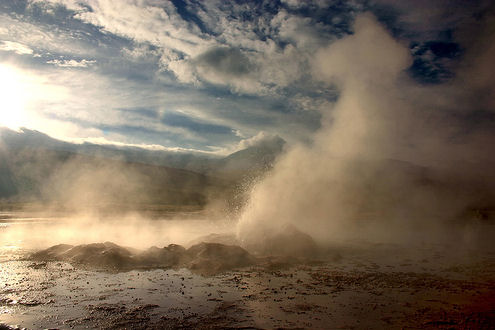
One very important aspect of the climate system is a so-called positive feedback mechanism.
Positive feedback is defined as “a feedback loop system in which the system responds to perturbation in the same direction as the perturbation.” (Ref. 24)
To put it simply, global warming has an adverse impact on some components of the Earth’s environment.
These components, as a result of the original warming impact, start acting in a way that even further contributes to the warming effect, and so the process goes on and on.
In other words, they become both an effect and a cause of global warming.
Below we discuss several obvious positive feedback mechanisms which set in motion the vicious circle of global warming.
Water vapor feedback – as the temperature rises, the amount of water vapor in the atmosphere will also rise. Since water vapor is a very strong greenhouse gas, this increased amount of water vapor in the atmosphere will lead to even greater warming. (Ref. 25)
Cloud cover feedback – global cloud cover increases as the global temperature rises and the water vapor content of the atmosphere also increases. Different types of clouds have different impacts on temperature. An increase in low cloud cover tends to cool the Earth, while an increase in high cloud cover would lead to greater warming. The net effect is estimated to be a positive radiative forcing, i.e. net warming.
(Ref. 26)
Ice albedo feedback – ice has a high albedo ratio. As global ice cover decreases, the Earth will absorb more solar radiation which will lead to further warming of the surface. (Ref. 27)
Carbon cycle feedback – important carbon reservoirs: oceans, tropical rainforests, wetlands & permafrost. (Ref. 28)
Oceans: 1) warmer surface waters will hold less dissolved carbon dioxide; 2) oceans are largest carbon sinks; larger amounts of anthropogenic carbon dioxide will increase levels of ocean acidification, which will threaten oceanic fauna responsible for absorbing carbon into their skeletons or shells – this will lead to smaller amounts of carbon being absorbed by the oceans; 3) rising temperature may lead to a slowdown in oceanic flows which are responsible for the burial of carbon within deep ocean.
Tropical rainforests: warming and drying of tropical regions lead to the loss of forest cover. Increased temperatures lead to the decline of plants’ rates of photosynthesis, and therefore reduce the general capacity of tropical forests to remove (“sequester”) carbon dioxide from the atmosphere.
Wetlands & permafrost: global warming may cause the release of methane (greenhouse gas) by wetlands and permafrost as well as by the continental shelves of the oceans. This will lead to further climate warming.
